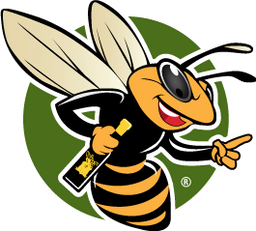For those venturing into the rewarding world of beekeeping, choosing the right honey bee hive is a cornerstone of success. Whether you’re an experienced apiarist or just beginning, selecting the proper hive can significantly impact the health and productivity of your bee colony. From traditional wooden hives to modern, innovative designs, the market offers a variety of options tailored to different needs.
As interest in sustainability grows, the accessibility of honey bee hives for sale has expanded. Beekeeping not only supports biodiversity and local ecosystems but also provides the joy of harvesting your own organic honey. With careful consideration, you can find a hive that aligns with your goals and sets you up for a fulfilling journey into apiculture.
Types of Honey Bee Hives: Finding Your Match
Honey bee hives are available in diverse designs, each catering to specific beekeeping styles and goals. Below are some of the most popular options:
-
Langstroth Hives: The most commonly used hive, featuring removable frames and a modular design. These are beginner-friendly and ideal for scalable honey production.
-
Top-Bar Hives: Perfect for natural beekeeping enthusiasts, these horizontal hives allow bees to build comb naturally on wooden bars, minimizing disturbance during inspections.
-
Warre Hives: Known for their low-intervention, vertical design, these hives closely mimic the natural behavior of bees and are excellent for small-scale beekeepers.
-
Flow Hives: Innovative hives with flow frames for easy honey extraction without opening the hive. These hives are gaining popularity for their convenience.
-
Poly Hives: Made from insulated polyurethane, these hives provide excellent temperature regulation, making them ideal for extreme climates.
Each hive type has unique advantages, and understanding these options helps you choose one that aligns with your goals, climate, and level of experience.
Benefits of Beekeeping
Beekeeping offers a range of benefits that go beyond honey production. Here are some reasons to consider starting your own hive:
-
Environmental Impact: Bees are vital pollinators, supporting biodiversity and enhancing plant life, including many crops. By keeping bees, you contribute to ecosystem health.
-
Honey Production: Harvesting raw, organic honey provides a natural sweetener rich in antioxidants and antibacterial properties.
-
Educational Opportunities: Beekeeping is a hands-on way to learn about biology, agriculture, and sustainability. It’s an engaging activity for both children and adults.
-
Therapeutic Value: Many beekeepers find working with bees to be calming and stress-reducing, offering mental health benefits.
-
Community Connection: Beekeeping fosters a sense of community through interactions with local farmers, gardening groups, and other beekeepers.
Key Factors to Consider When Choosing a Hive
Finding the right honey bee hive requires thoughtful evaluation. Below are some critical factors to consider:
1. Hive Material
-
Wood: Traditional and insulating, but requires regular maintenance.
-
Plastic: Lightweight, durable, and easy to clean, though less insulating than wood.
-
Polyurethane: Offers excellent insulation and weather resistance, making it ideal for colder climates.
-
Metal: Durable but not commonly used for entire hives due to heat conductivity, often seen in protective covers.
2. Size and Capacity
-
Larger hives accommodate more bees, increasing honey production potential but requiring more management.
-
Modular hives, like Langstroth designs, can expand with supers as your colony grows.
-
Smaller hives are ideal for beginners or those with limited space.
3. Compatibility with Bee Species
-
Apis mellifera (Western Honey Bee): Compatible with most hives, including Langstroth and Flow.
-
Native Bees: May require specialized hives or smaller designs.
-
Consider the temperament of your chosen species, as some require additional safety measures.
Where to Buy Honey Bee Hives
You can purchase honey bee hives through various channels, depending on your preference and requirements:
Local Suppliers
Local beekeeping suppliers provide region-specific advice and equipment suited to local climates and bee species. Visiting a local supplier allows you to inspect hives in person and consult experienced staff for guidance.
Online Retailers
Online marketplaces like Amazon and dedicated beekeeping websites offer a broad selection of hives at competitive prices. Reading customer reviews and comparing features helps ensure a confident purchase.
Beekeeping Clubs and Associations
Joining a local beekeeping association connects you with experienced keepers who may sell hives or offer group discounts. Clubs also provide opportunities to learn and network.
Pricing and Budget Considerations
The cost of honey bee hives varies depending on the type, material, and features. Below is an overview of typical price ranges:
|
Hive Type |
Average Cost |
|
Langstroth |
$150 - $500 |
|
Top-Bar |
$200 - $400 |
|
Warre |
$250 - $600 |
|
Flow |
$600 - $900 |
|
Poly |
$200 - $500 |
Additional Costs to Consider
-
Bees: $100–$200 for a nucleus colony or package bees.
-
Tools & Gear: $50–$300 for essential equipment like smokers, hive tools, and protective suits.
-
Maintenance: $50–$200 annually for medications, feed, and repairs.
-
Shipping: Online purchases may incur $20–$100 in delivery fees.
Planning for these expenses ensures a smooth start to your beekeeping journey.
Conclusion
Selecting the right honey bee hive is a pivotal step for successful beekeeping. By exploring various hive types, evaluating materials, and considering your goals, you can make an informed choice. Whether you opt for a traditional wooden hive or a modern Flow design, investing in quality equipment ensures thriving colonies and abundant honey.
With resources like local suppliers, online retailers, and beekeeping associations, finding the perfect hive has never been easier. Start your beekeeping journey today and experience the joy of nurturing bees while contributing to a healthier ecosystem.
FAQs About Honey Bee Hives
What is the best hive type for beginners?
Langstroth hives are often recommended for their simplicity and modular design, making them beginner-friendly. Top-Bar hives are another great option for those who prefer natural beekeeping methods.
How much do honey bee hives cost?
Hive costs range from $150 for basic Langstroth hives to $900 for advanced Flow hives. Additional expenses like bees and tools should also be factored in.
Where can I buy honey bee hives?
You can find hives at local beekeeping suppliers, online retailers, or through beekeeping clubs. Each option offers unique advantages in terms of selection, pricing, and support.
What materials are best for honey bee hives?
Common materials include wood for insulation, polyurethane for temperature regulation, and plastic for durability. Your choice depends on climate and maintenance preferences.
How do I choose the right hive for my bees?
Consider your bee species, climate, and beekeeping goals. For example, insulated poly hives work well in colder climates, while Flow hives are great for hassle-free honey extraction.



